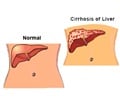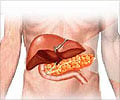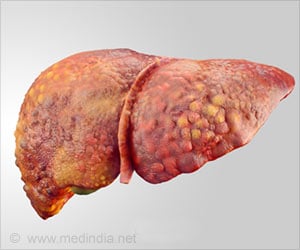Excessive alcohol consumption poses serious health risks, including liver disease, heart problems, addiction, and increased risk of mental health issues.

Trends in alcohol-specific deaths in England, 2001-22: an observational study
Go to source). For the study, published in Lancet Public Health, researchers analysed Office for National Statistics (ONS) figures of deaths caused solely by alcohol in England. They found that death rates were stable between 2009 and 2019, but increased by a fifth in 2020, rising by a further 13.5% between 2020 and 2022.
‘The surge in #alcohol deaths in England is worsening health inequalities, hitting men and those in deprived areas hardest. This isn't just a health crisis, it's an inequality crisis. #alcohol_deaths’





The team estimated that 3,911 more people had died solely because of alcohol in England between 2020 and 2022 than would have been the case if pre-pandemic trends had continued. Disproportionate Rise in Alcohol Deaths
The largest increases were among groups most likely to be affected before the pandemic – men, people from deprived areas, and those aged 50 to 69. The main cause, the researchers found, was a steep rise in liver damage caused by alcohol. Deaths from acute causes such as alcohol poisoning also increased.The latest ONS figures from 2023, though not analysed by the new study, show alcohol deaths continuing to rise in England, up to 8,274.
Lead author Dr Melissa Oldham, of the UCL Institute of Epidemiology & Health Care, said: “The sharp increase in alcohol deaths during the pandemic was no flash in the pan. The higher rate has persisted and is getting worse each year.
“It is an acute crisis, and urgent action is needed to prevent further avoidable deaths. This includes substantial investment in health services to better detect and treat liver disease as well as policies to reduce alcohol consumption in the population as a whole, such as minimum unit pricing and advertising restrictions.”
Advertisement
In the paper the researchers said the increase in liver disease deaths may be partly explained by an increase in drinking among heavier drinkers and by more frequent binge drinking, as well as reduced access to health services during the pandemic and reduced treatment seeking. Increases in drinking seen during the pandemic and lockdowns do not seem to have returned to pre-pandemic levels, which could partly explain the continuing increase in alcohol-specific deaths each year.
Co-author Dr Gautam Mehta, of the UCL Division of Medicine, said: “There are marked inequities in the provision of liver care in England. The average age of death from liver disease is nine years lower in the most deprived parts of the country, compared to the least. And, overall, rates of death following a hospital admission with liver cirrhosis are several times higher than comparable admissions for stroke or heart disease. New treatments and strategies for earlier detection are urgently needed.”
Persistent higher alcohol death rates since the pandemic have also been reported in Germany, Estonia, Latvia, Bulgaria, Australia, and the United States.
The researchers added that it was unclear why changes in alcohol consumption at the start of the pandemic had persisted, when for most people day to day life had returned to pre-pandemic routines.
This could be that habits formed during the lockdowns were difficult to break. They suggested that, in England, it could be linked to the cost-of-living crisis, as well as worse mental health, with higher rates of severe psychological distress reported in England between 2020 and 2022.
The study used the ONS definition of alcohol deaths as those registered on the death certificate as having an underlying cause that is wholly attributable to alcohol. This excludes deaths caused partially by alcohol such as alcohol-related cancers or road traffic accidents.
The researchers received funding from the Society for the Study of Addiction, Cancer Research UK and the National Institute for Health Research.
Dr Katherine Severi, Chief Executive, Institute of Alcohol Studies, said: “It’s shocking to see that almost 4,000 more people died in England from alcohol than was expected since the pandemic, with the number continuing to rise.
“We’ve known for years now that changing drinking habits during lockdowns increased levels of alcohol harm – this study underlines the impact that had on worsening health inequalities across England.
“The government has made tackling inequalities one of its health priorities. There is no way of doing that without introducing a comprehensive alcohol strategy that tackles cheap, excessively available, and aggressively marketed alcohol.”
Professor Sir Ian Gilmore, Chair, Alcohol Health Alliance, said: “Five years on from the start of the pandemic, we are still seeing the devastating consequences of increased alcohol consumption. Drinking trends have not returned to pre-pandemic levels, and the latest data confirms that alcohol-specific deaths remain at record highs – hitting those who were already at greatest risk before the pandemic the hardest.
“Alarmingly, the burden of alcohol harm continues to fall disproportionately on the most deprived communities, and it is deepening existing health inequalities. The government must act urgently to introduce evidence-based policies, such as minimum unit pricing, to reduce alcohol harm and save lives.”
Reference:
- Trends in alcohol-specific deaths in England between 2001-2022: an observational study - (https://www.thelancet.com/journals/lanpub/article/PIIS2468-2667(25)00047-7/fulltext)
Source-Eurekalert















